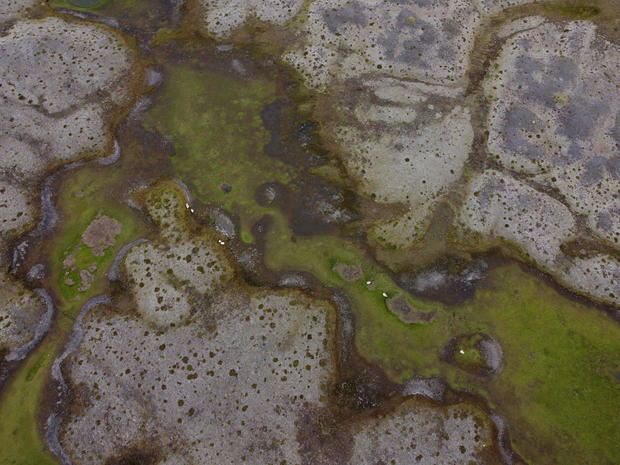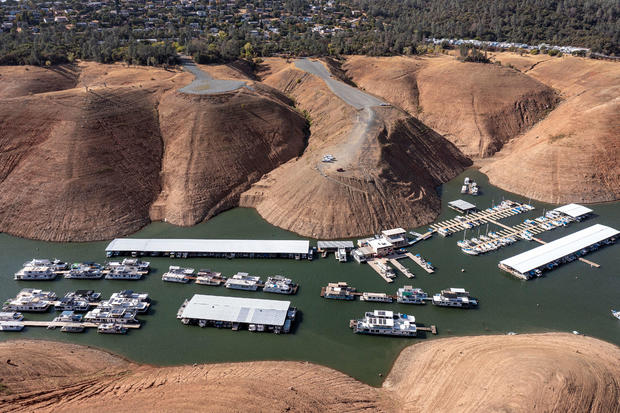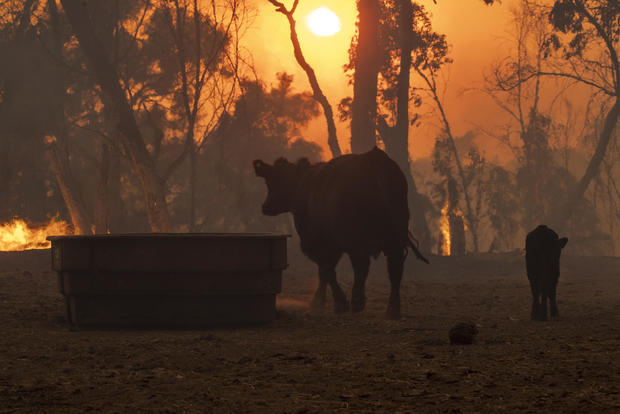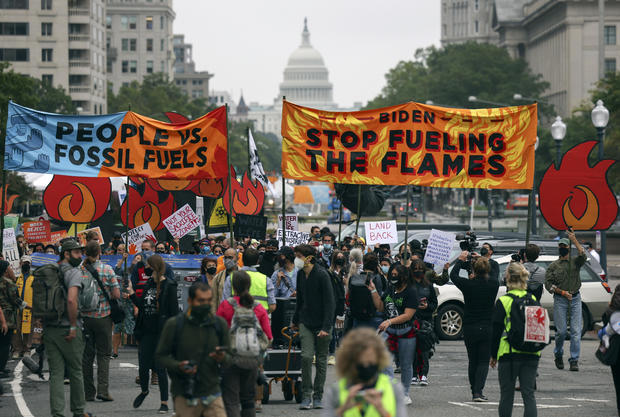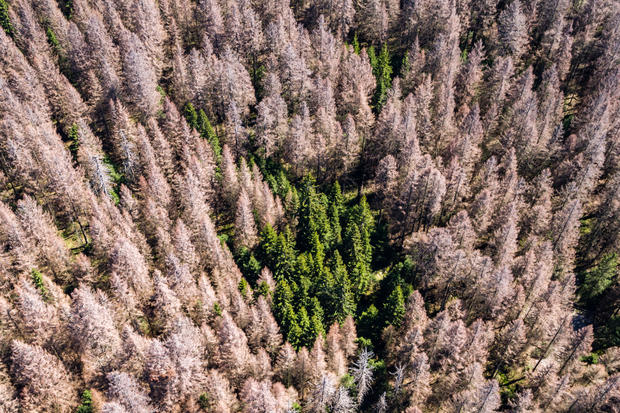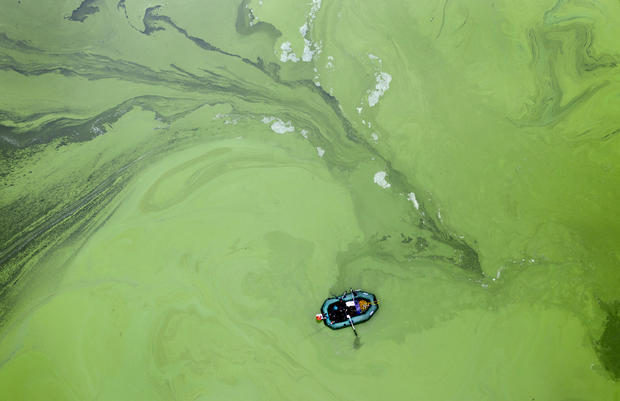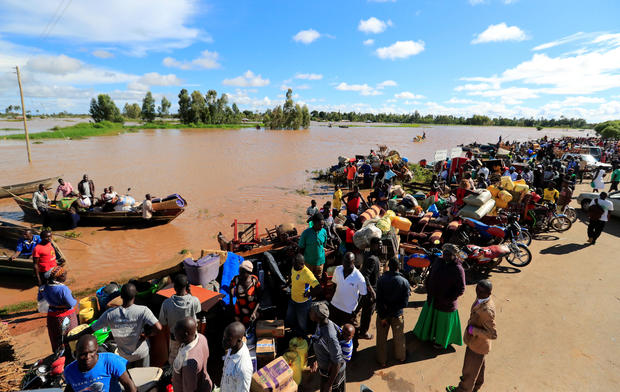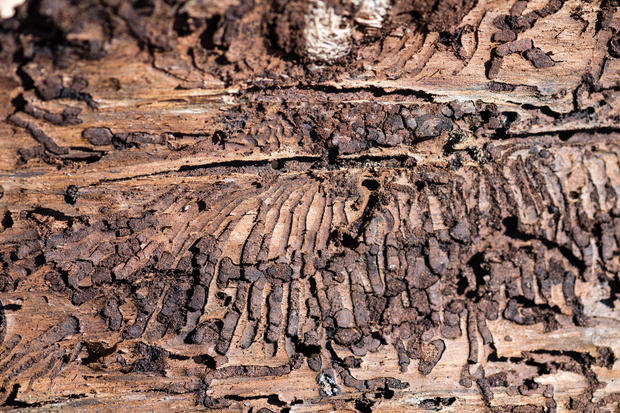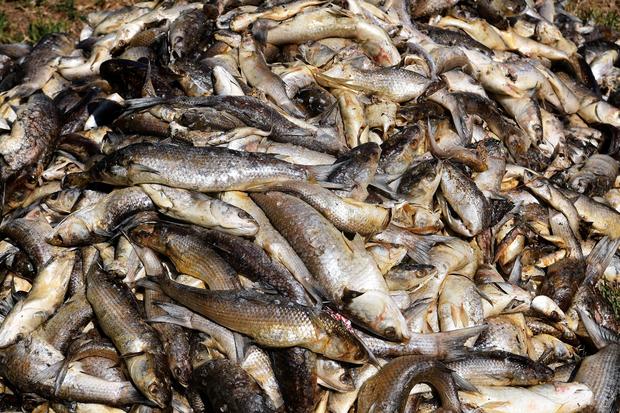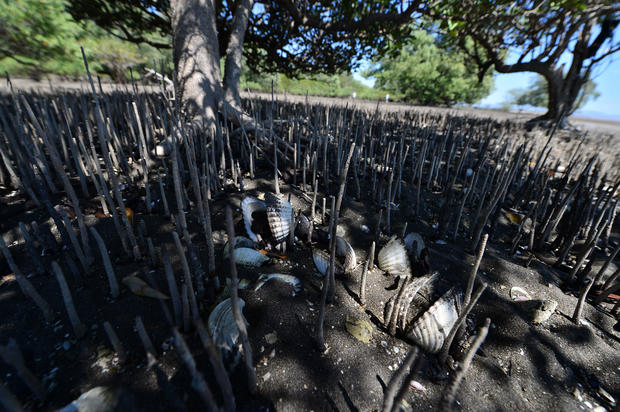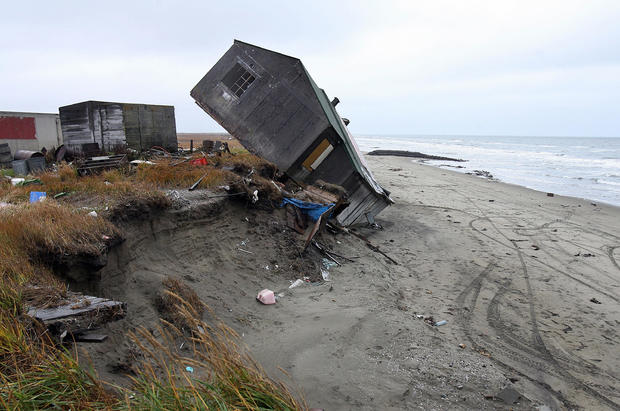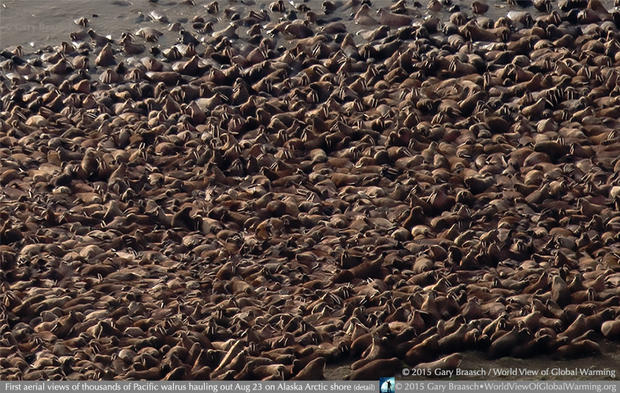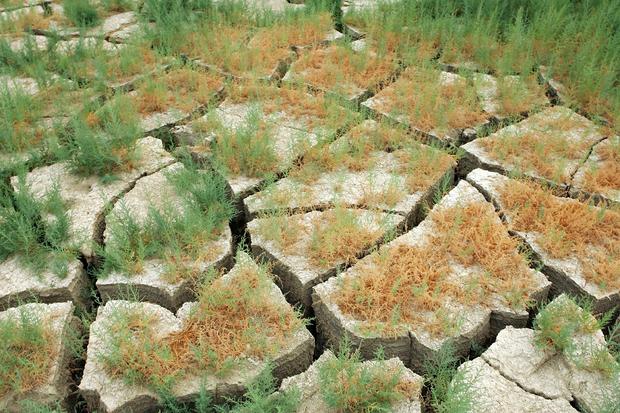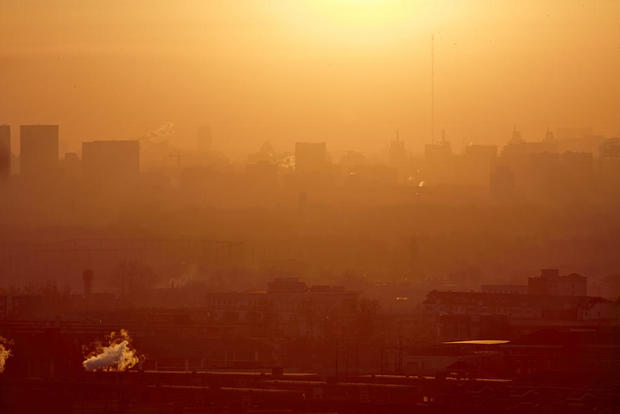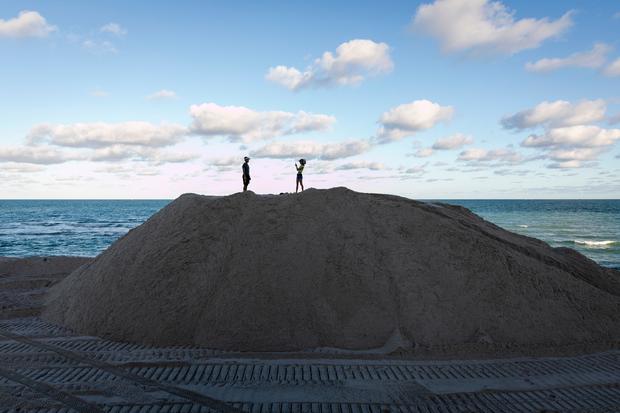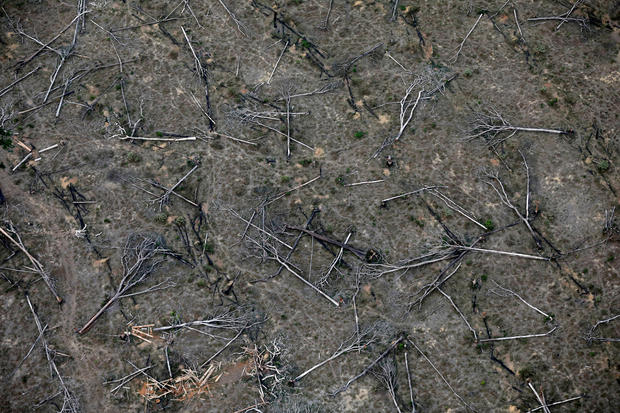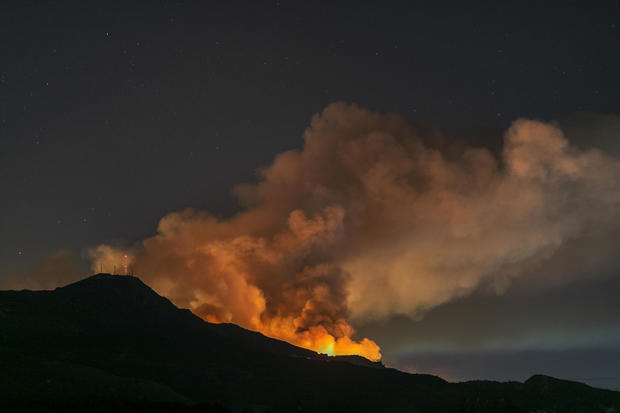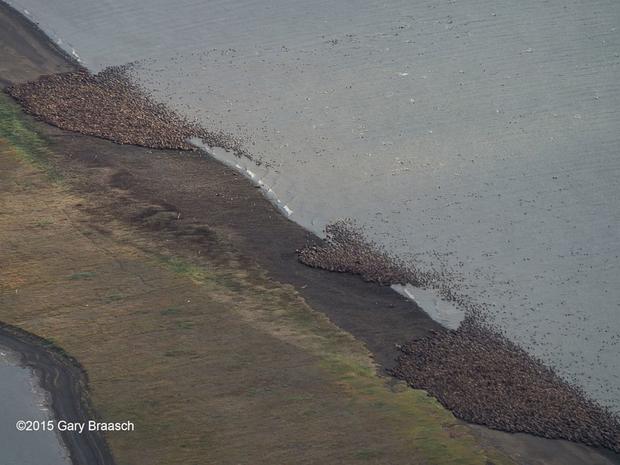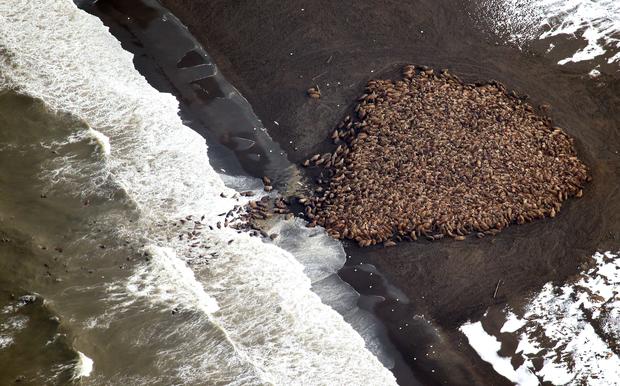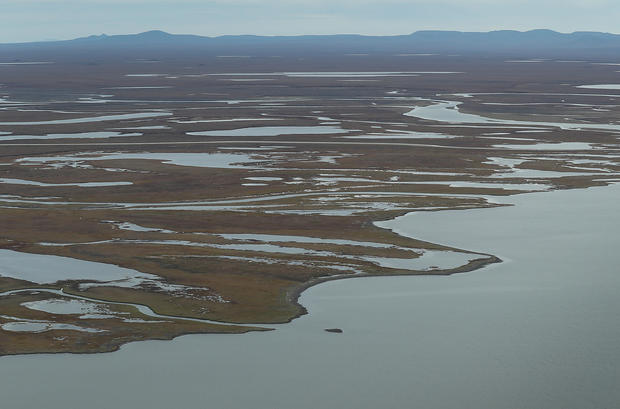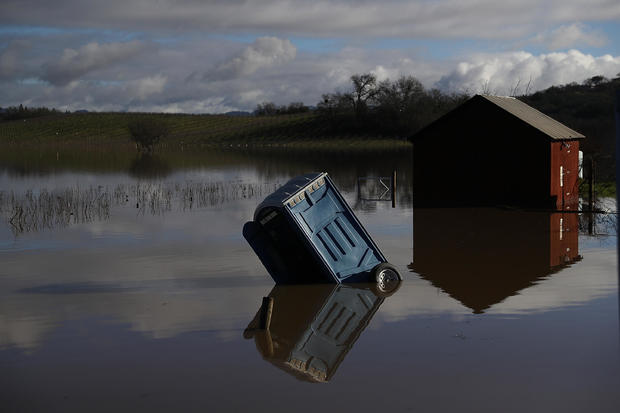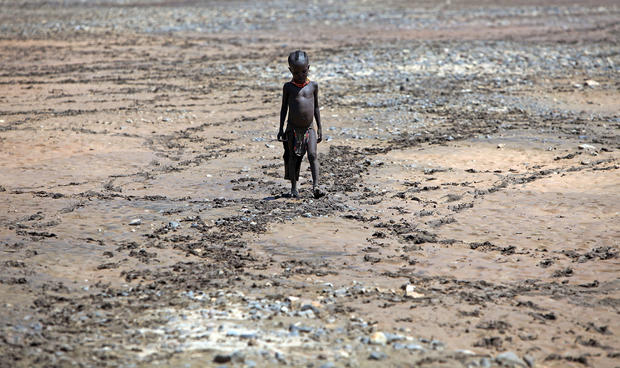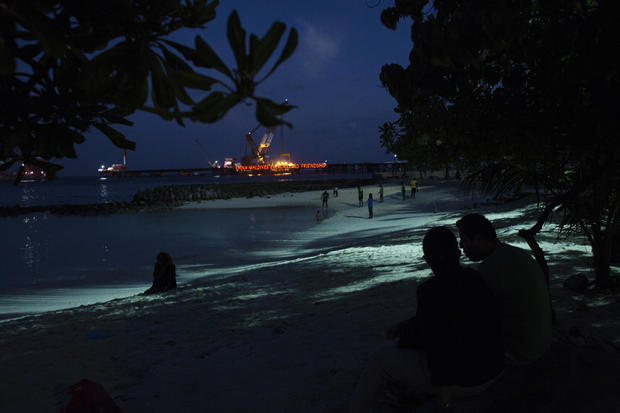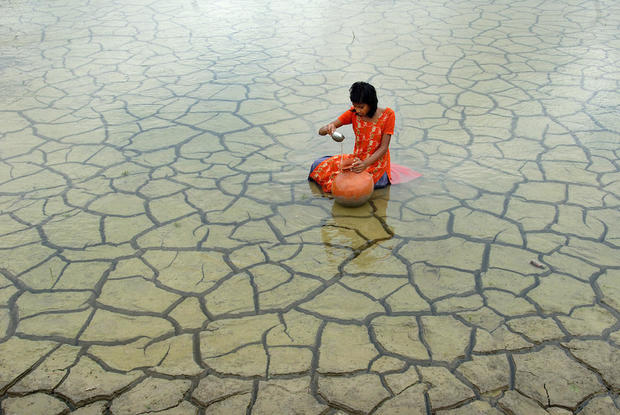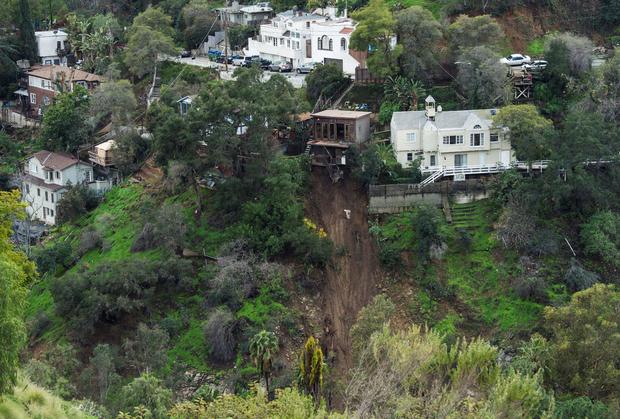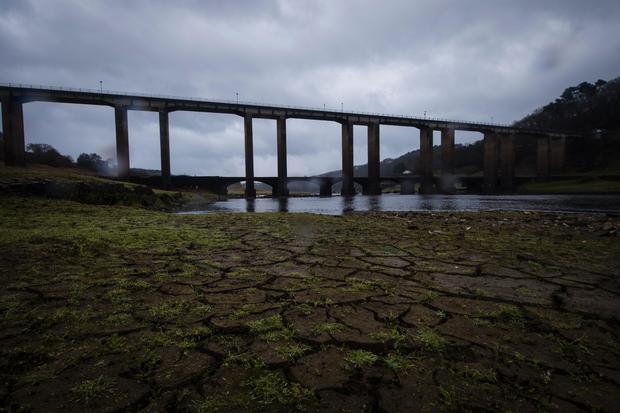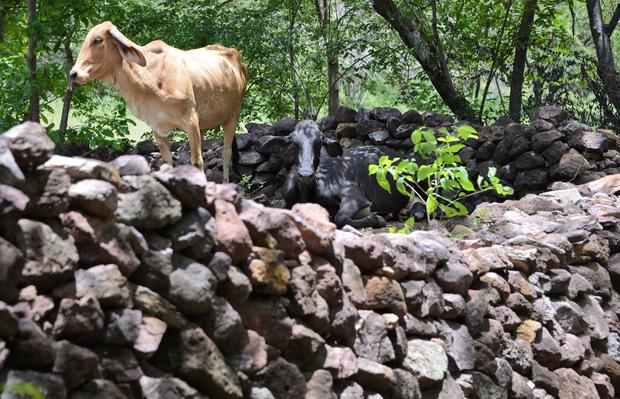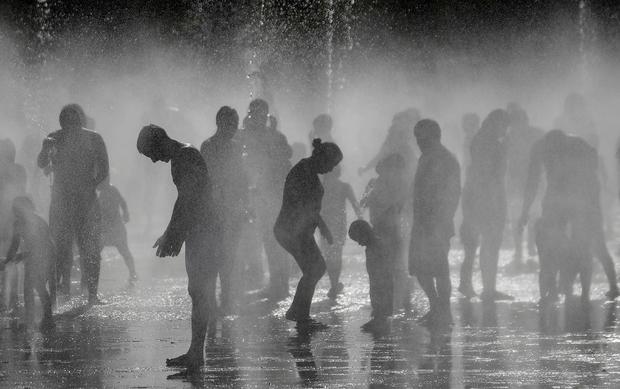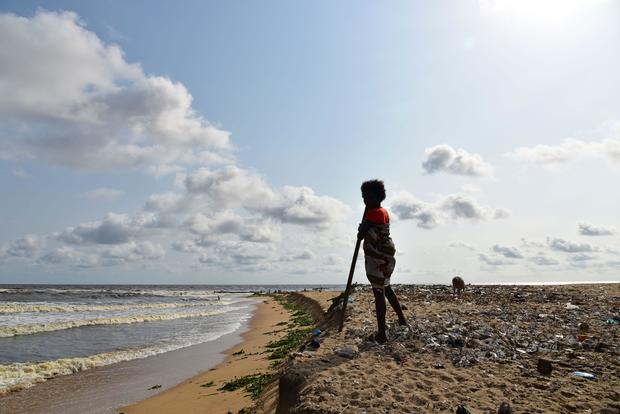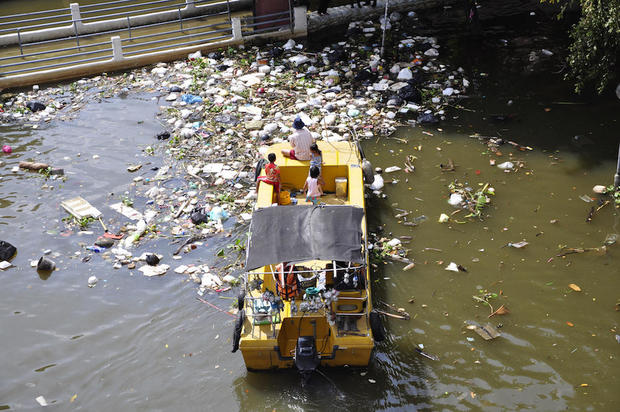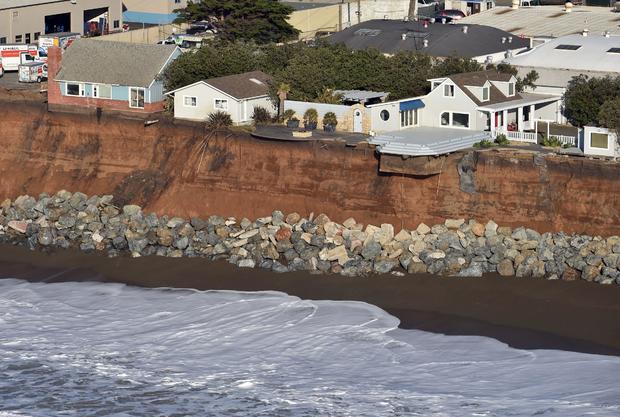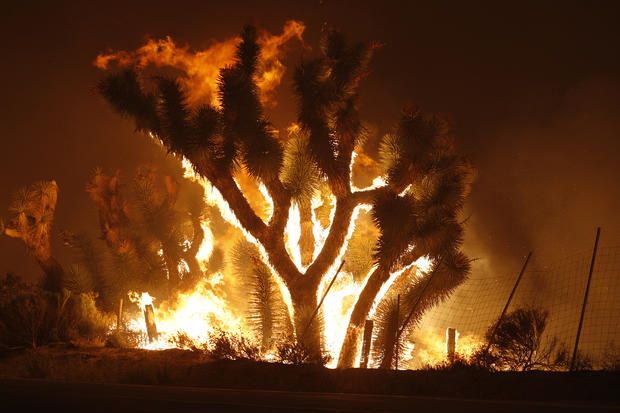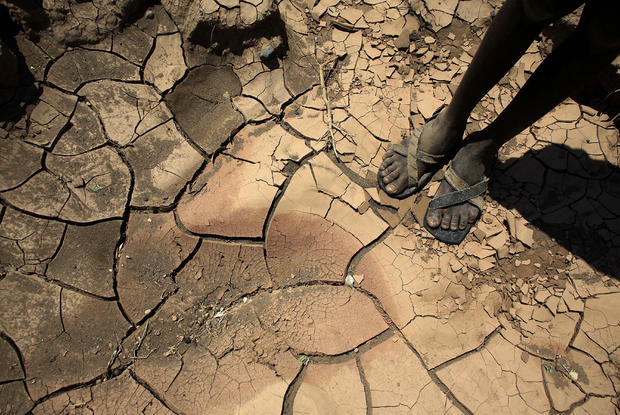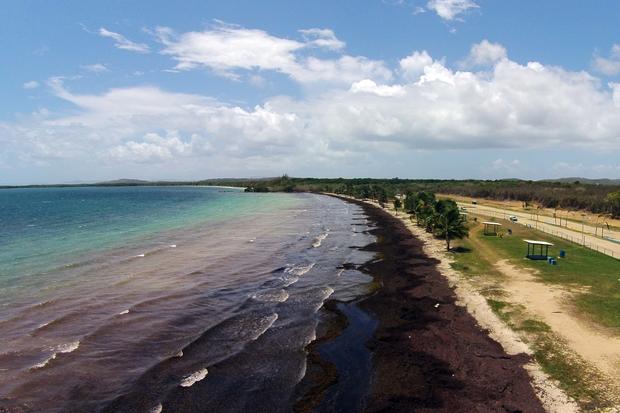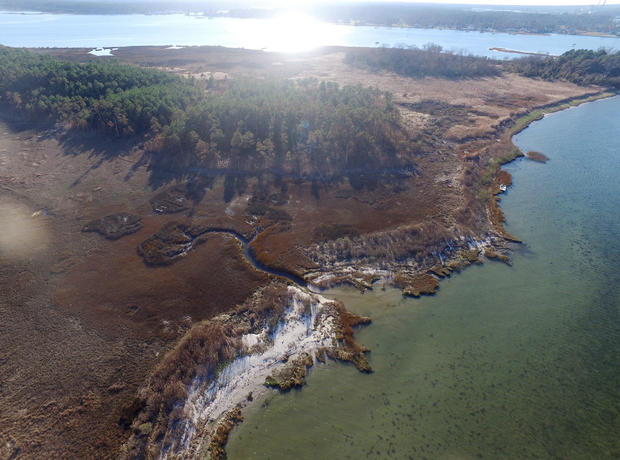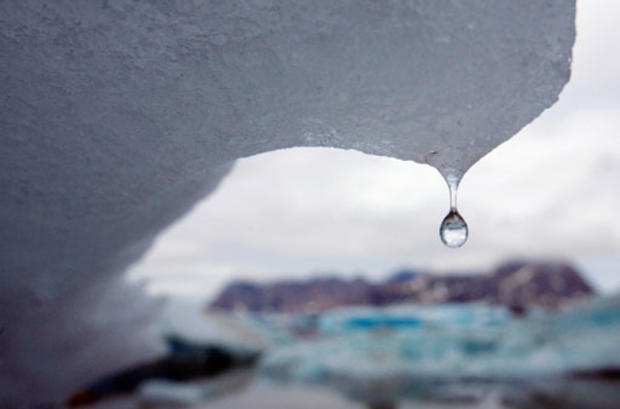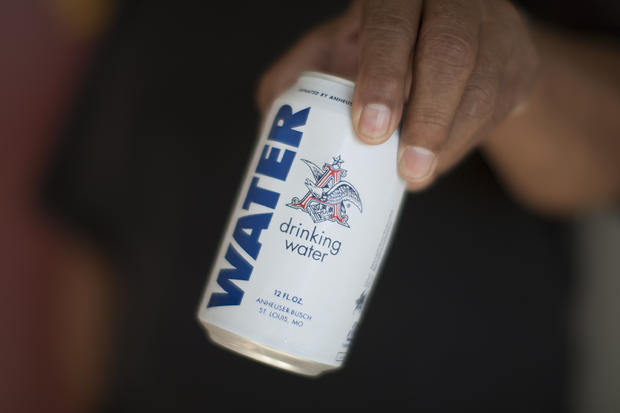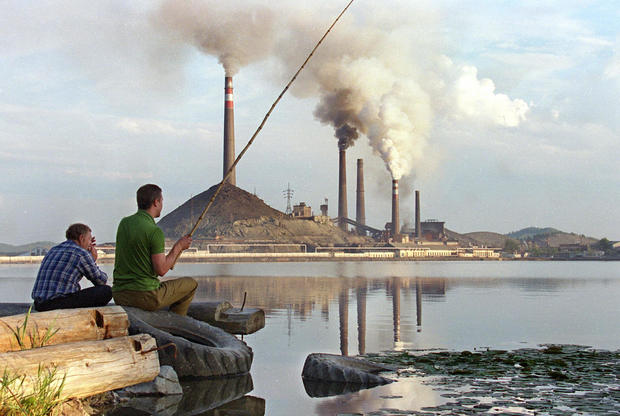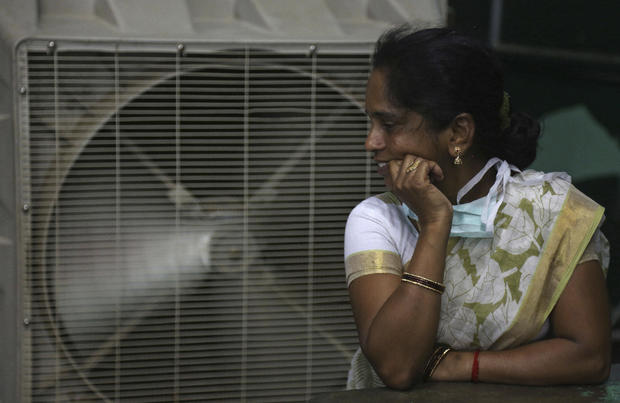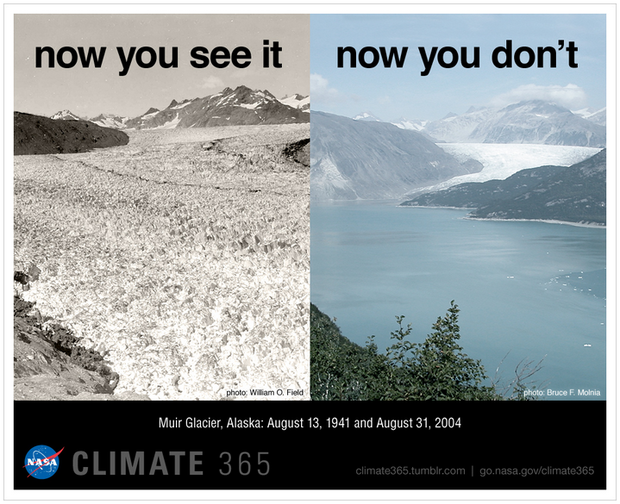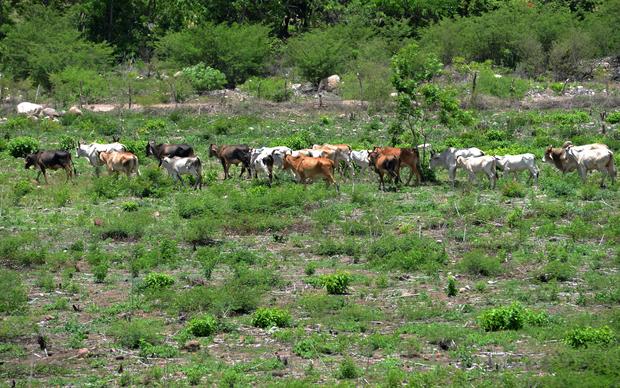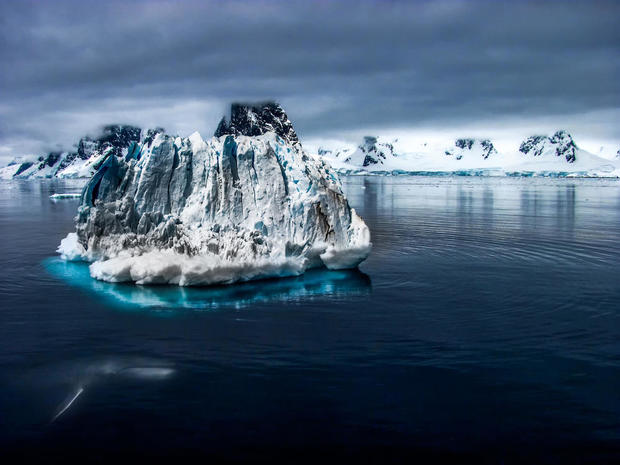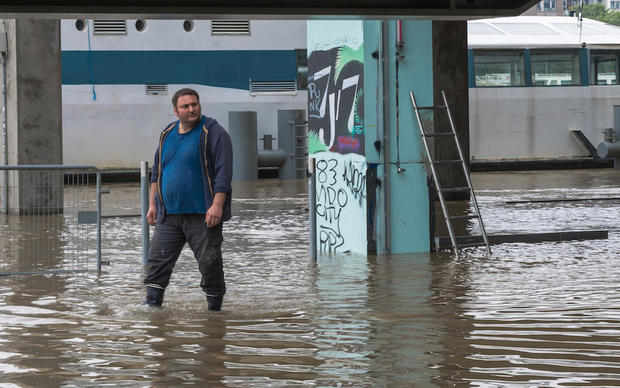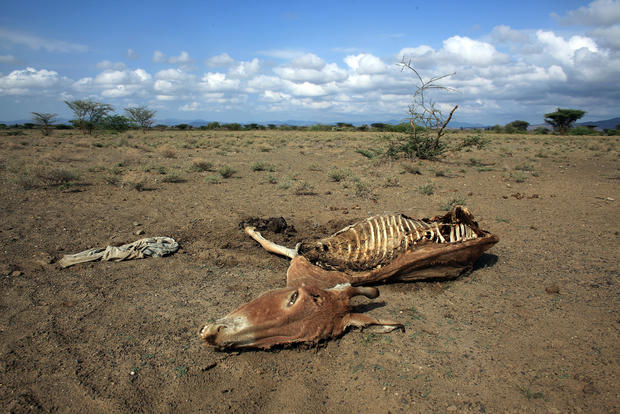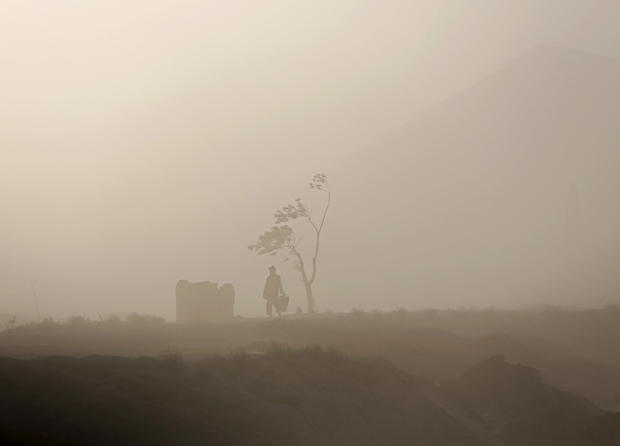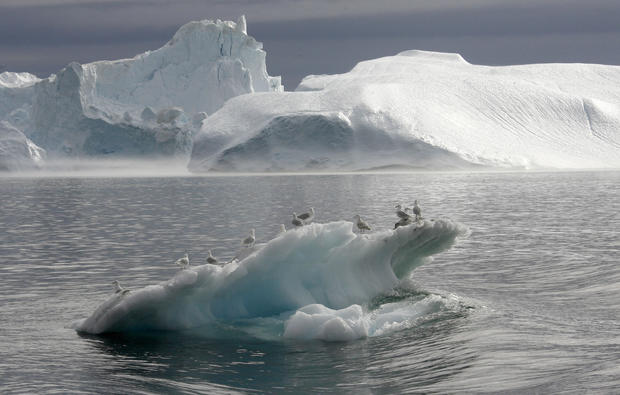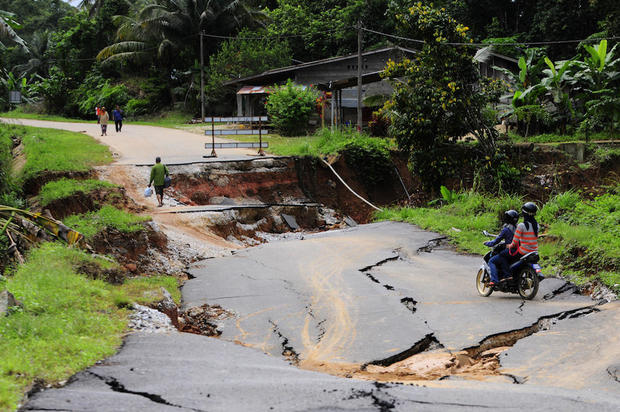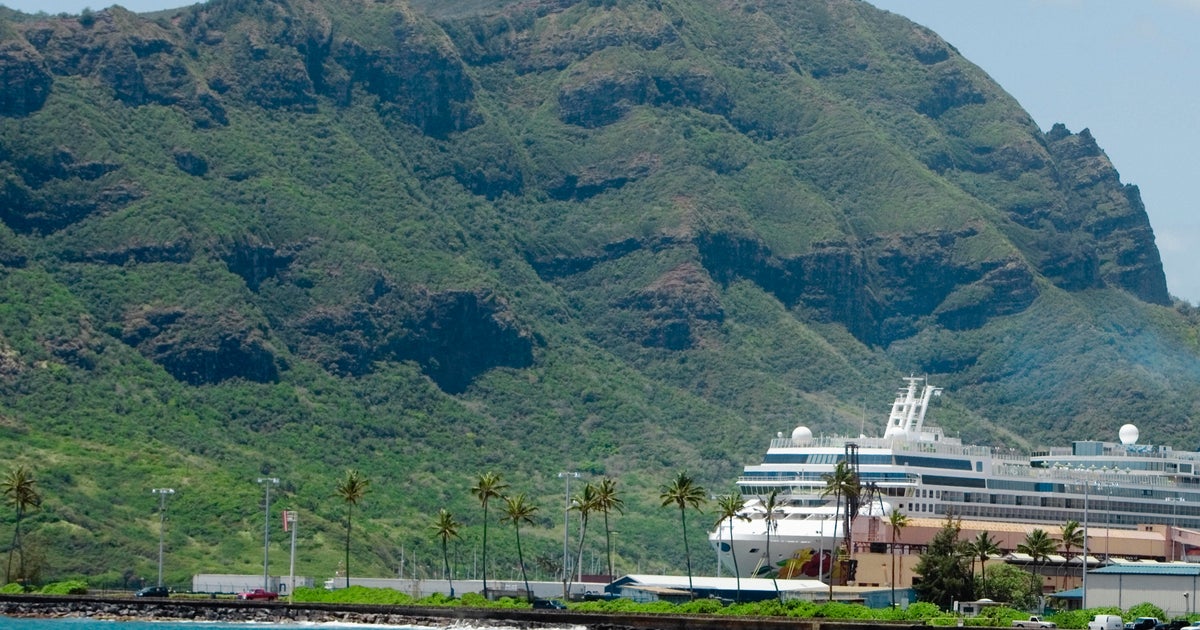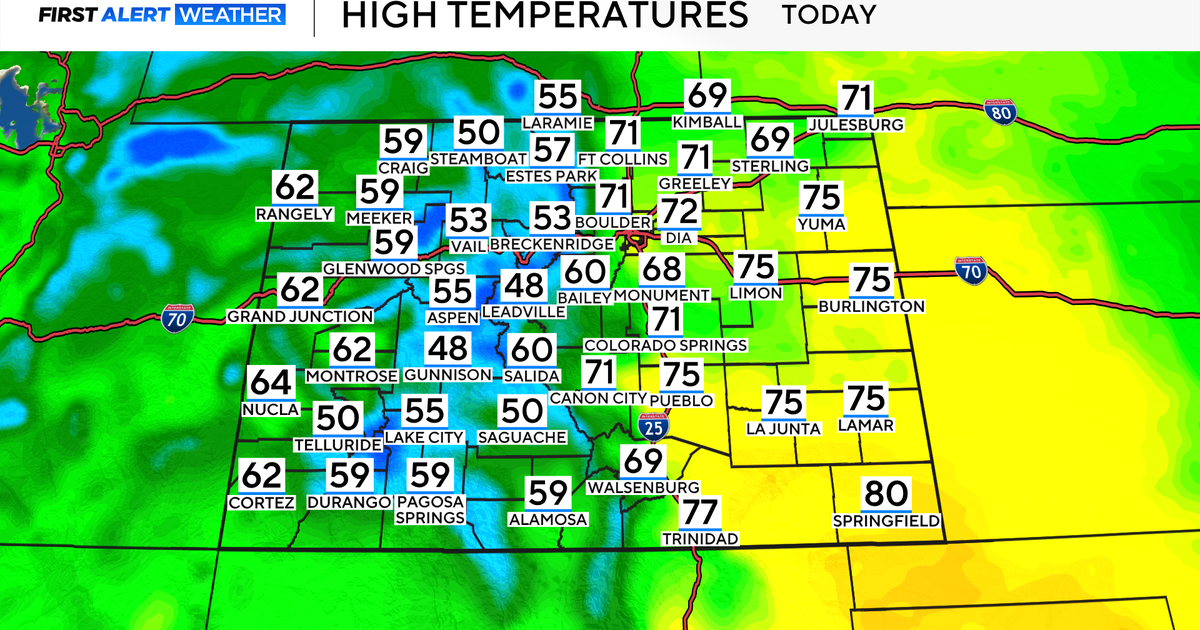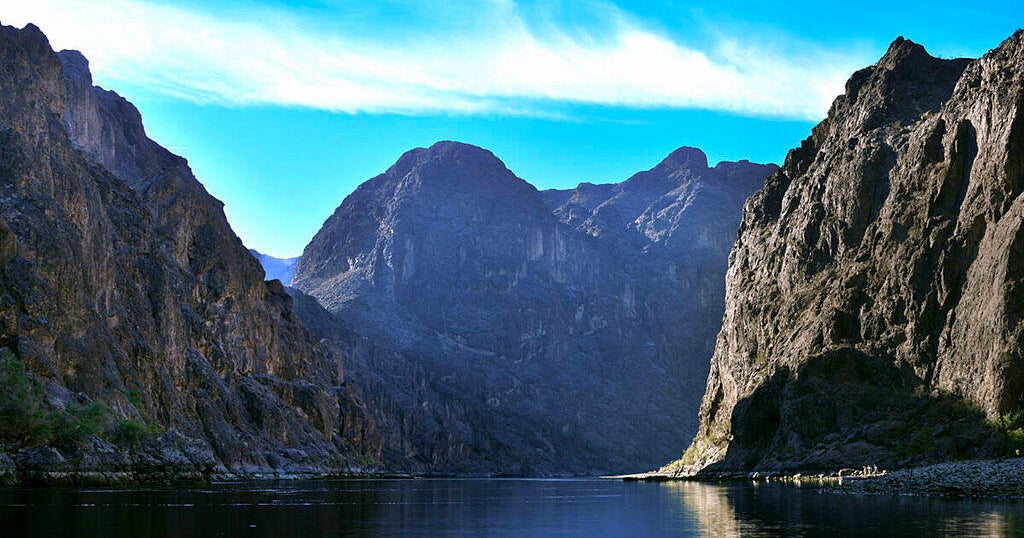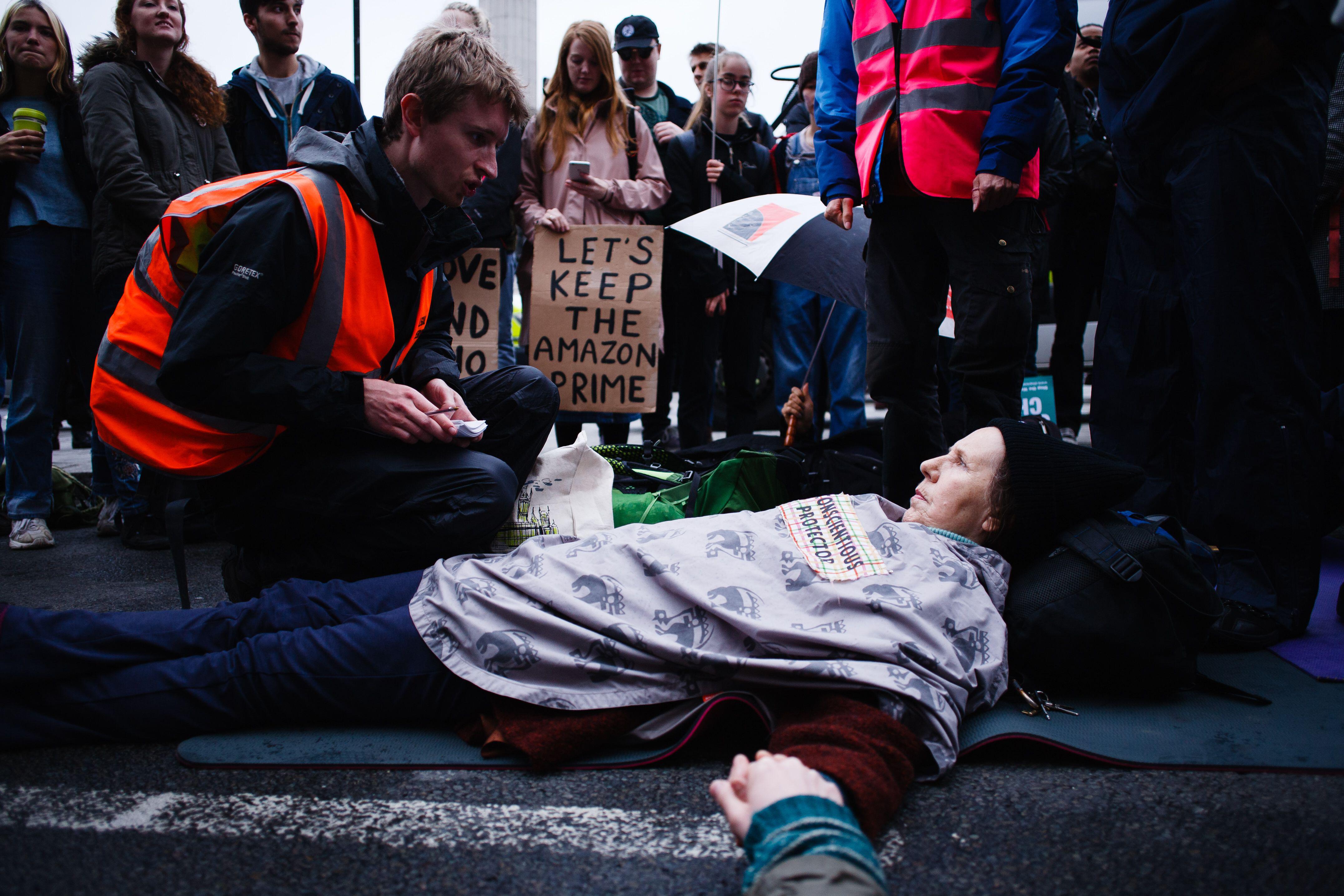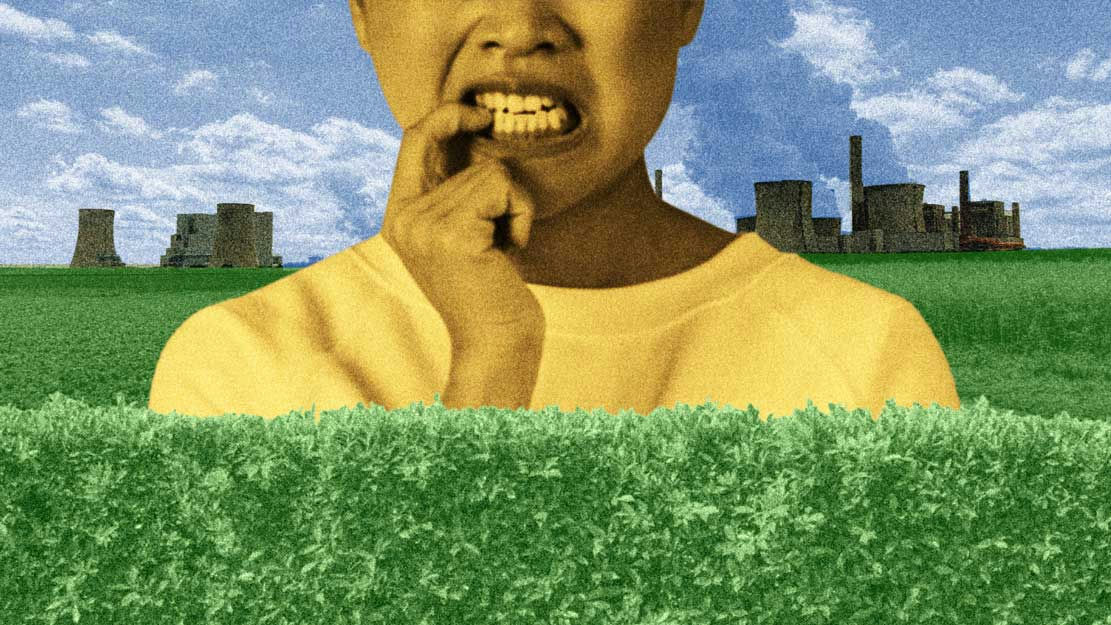Stunning photos of climate change
In February 2022, the United Nations aired a dire warning: The window to reverse climate change, and its resulting "atlas of human suffering," has almost closed.
Climate change is no longer a vague hypothetical for Earth's future. Scientists agree that the effects of greenhouse gas emissions already have altered ecosystems, weather patterns, food supplies, lives and economies. From severe drought and fires to rising seas and eroding coastlines, warnings from decades ago have manifested worldwide.
These photos illustrate the state of the planet and our climate as it has changed over the past decade.
In this aerial view, sheep graze in green marshes next to much dryer, less vegetated land not far from the receding Breidamerkurjokull glacier on August 18, 2021, near Hof, Iceland. Breidamerkurjokull once covered the whole area. Since the 1990s, 90% of Iceland's glaciers have been retreating, and projections for the future show a strong reduction in the size of its ice caps.
Climate change in America
In this photo from October 11, 2021, houseboats on Lake Oroville in Oroville, California sit far below the old coastline — a stark illustration of the historic drought gripping the American West.
Another day, another fire
The Alisal Fire, near Goleta, California, prompted freeway closures and evacuations on October 12, 2021.
The flames were fueled by high winds over drought-stricken land.
Change in America
Here, firefighters work the 2020 Creek Fire in California's Sierra Nevada Mountains.
The fire burned more then 379,000 acres, one of the largest wildfires in state history.
Demanding change
Climate protesters marched outside the White House on October 12, 2021 in Washington, D.C.
The group urged the Biden administration to take more decisive policy action on the climate crisis.
Dried forests
In this drone image taken in May 2020, drought dries out spruces in Germany's Harz mountain region. For the past several summers, there has been only a small fraction of rainfall compared with normal conditions, stressing forests across Germany, and making them more susceptible to pests.
Such droughts have grown more common in Germany, and many scientists attribute the trend to global warming.
Very green water
A fisherman in a rubber boat is surrounded by rotting cyanobacteria in the Kyiv Water Reservoir near Kyiv, Ukraine, on November 15, 2020.
The region was rocked by extreme hot weather throughout 2020, resulting in widespread damage to agricultural crops and destruction to the natural habitat of some species.
Lonely lagoon
A tourist pier in Suesca, Colombia, gets little use, thanks to the extremely low water level, on March 12, 2021.
According to experts, the desiccation is due to climate change.
Severe coastal erosion
Here's a view of a landslip on a cliff edge and beach in the village of Happisburgh, England, on January 27, 2021.
Global climate change, and resulting storms and sea swells, has cost the east coast of the United Kingdom up to one meter of coastline annually.
Flooded villages
Shifting rainfall patterns have led to flooding in some areas of Kenya and severe drought in others.
Here, residents gather with their belongings after their homes were flooded in May 2020.
Climate change weakens forests
Dried-out forest land is more susceptible to pests like the bark beetle. Tens of thousands of woodland ecosystems in North America and Europe have been — perhaps permanently — ravaged by bark beetles and related insects.
Here, bark beetle feeding channels are seen on a dead spruce in the Harz mountain region on May 7, 2020, near Wernigerode, Germany.
Mass fish death
This photo from July 1, 2019, shows dead fish piled up near a lagoon in southeastern France.
A prolonged heat wave lowered the lagoon's oxygen levels, provoking the death of several tons of fish.
Drought
Cracked earth is all that remains where water once stood at the Pejar Dam, one of Goulburn, Australia's primary water supply reservoirs.
An Australian federal government report has found that the Australian continent will likely warm between one and six degrees by 2070. Consequently, Australia could suffer more tropical storms and droughts, which cut farm output by billions of dollars. In addition, tourism could suffer from damage to reefs, rainforests and beaches.
Climate change means more floods
Environmental experts in Britain have linked an increasing number of floods to climate change.
Here, Tewkesbury Abbey and a children's playground at the confluence of the Rivers Severn and Avon is surrounded by flood waters on February 27, 2020, in Tewskesbury, England.
Mysterious die-offs
A beach on Honduras' Gulf of Fonseca is littered with shells of dead mollusks.
Honduran authorities are investigating the rare rise in mortality, and locals suspect climate change for what they call a massive death of mussels, clams, and other mollusks.
Toxic algae
Experts at the EPA believe that climate change could lead to a spike in harmful algal blooms. The salination of fresh water, rising sea levels and elevated water temperatures can all contribute to the growth of harmful algae.
These blooms are dangerous to both humans and wildlife. They also strain coastal economies that rely on fishing and tourism.
Here, a boat sails through a deepening algae bloom across the Caloosahatchee River in Labelle, Florida.
Beach erosion
A home destroyed by beach erosion tips over in the the Alaskan village of Shishmaref.
Shishmaref faces evacuation due to global warming. Rising temperatures there have caused both a reduction in sea ice and a thawing of permafrost along the coast, threatening the shoreline.
Walrus "haul-out"
Walruses are unique among sea mammals in that they must periodically rest on land or ice to recharge. They prefer to do this on sea ice over shallow feeding areas about 100 miles off the Alaskan coast. Over the last decade, however, that ice has been disappearing, forcing thousands of walruses to haul out on Alaskan beaches.
This small detail crop of an aerial photo by Gary Braasch shows thousands of walruses engaged in one of the earliest known haul-outs ever.
Worsening drought
Much of Nevada's Lake Mead has dried up as a result of the historic drought in the western United States. Here, tamarisk plants grow on cracked earth in an area that, up until recently, would have been underwater.
The National Park Service has been forced to close boat launch ramps and move entire marinas in an effort to keep up with the receding water levels. Lake Mead is the largest man-made reservoir in North America, and it is now threatened due to a combination of population growth and climate change.
Air pollution
Beijing is shrouded in air pollution on a winter morning. Breathing polluted air already to more than 5.5 million premature deaths a year, and researchers predict that by 2030, air pollution-related deaths could rise by 60,000 a year due to the effects of climate change.
Higher temperatures and drier conditions "can speed up the reaction rate of air pollutants that form in the atmosphere," University of North Carolina-Chapel Hill researcher Jason West explained.
Disappearing ice cap
A NASA study published in the Journal of Climate shows that the oldest and thickest Arctic sea ice is disappearing at a faster rate than the younger, thinner ice at the edges of the Arctic Ocean's floating ice cap.
Images show the ice cap in 1980, left, and in 2012, right.
Hills of sand
People stand on top of a mound of sand dumped on a beach in Miami Beach, Florida, on January 16, 2020.
Dozens of trucks have started dumping hundreds of thousands of tons of sand on Miami Beach as part of U.S. government measures to protect Florida's tourist destinations against the effects of climate change.
Farmers feel the affects
In this aerial view, a farmer's field of parched soil lies covered in patterns left by a tractor during very dry weather on April 27, 2020, near Luckau, Germany.
Farmers have so far seen only a small fraction of regular rainfall for April and many fear that droughts of recent years will recur. Soil in eastern and southern Germany is currently particularly dry.
Fires in the Amazon
Here, an aerial photo shows a deforested plot in the Amazon in Brazil. Rainforests like the Amazon reduce the amount of carbon dioxide in the atmosphere, slowing the rate of change of our global climate. Massive fires in the area in 2019 burned an estimated 2.24 million acres of forest.
Deforestation in Brazil's Amazon rainforest increased by more than 50% during the COVID-19 crisis.
Wildfires
Experts say that climate change is increasing the frequency and severity of wildfires in dry areas.
In Southern California, a years-long drought dried the scrub brush and trees on many hillsides. When temperatures and wind are high and humidity is low, a tiny spark can result in a devastating fire. In 2019, fires destroyed more than a quarter of a million acres of land and killed three people across the state. The 2020 wildfire season was even worse.
What the animals are telling us
In this aerial photo taken August 23, 2015, thousands of Pacific walruses flock to the northwest coast of Alaska, searching for places to rest in the absence of sea ice.
As ocean temperatures rise, these herds appear on Alaska's beaches earlier in the year.
Walrus haul-out
It is said walruses are "hauling out" when they congregate in large groups, like the one seen here.
Recently, there have been years when more than 30,000 of these Pacific animals have come ashore together on Alaska's beaches, a dangerous trend that often leads to significant loss of life. This on-land crowding is particularly dangerous for baby walruses, who are uniquely susceptible to being crushed during stampedes.
Starving animals
A malnourished cow walks along a dried up river bed in the village of Chivi, Zimbabwe, in January 2016.
The U.N. weather agency blames the dry, hot weather on an "increasingly visible human footprint."
Melting snow
Winters are becoming milder in northern Norway, causing snow to melt as temperatures rise above freezing.
This photo shows the village of Steigen, well inside the Arctic Circle.
Melting permafrost
Record-high temperatures in Alaska have melted permafrost on the tundra. As permafrost melts, it releases carbon dioxide into the atmosphere, adding fuel to the fire of rising global temperatures.
Thawing permafrost is also more prone to erosion, which means coastal lands are washing into the ocean.
Flooding
Rain and snowstorms pounded Northern California in January 2017, bringing much-needed precipitation in the midst of a drought but also causing damaging floods.
Heavier rainfalls have been attributed to a warming planet, according to the Environmental Protection Agency. Between 1910 to 2015, parts of the country seeing "extreme single-day precipitation events" increased by 0.5% per decade, the agency says.
Wildfire season gets longer
Over the past 20 years, the average number of wildfires larger than 1,000 acres has increased by more than 100 blazes per year. Since the early 1970s, the average length of wildfire season has also gone up, from five months to seventh months, as climate change drives up temperatures.
Pictured: The Loma Prieta Fire burns near Loma Prieta, California, in September 2016.
Sea-level rise
Indonesia, an archipelago nation, has already seen the impact of rising sea levels.
Here, a man cleans up mud from a tidal wave from the floor of a mosque.
Dried-up river bed
A boy from the remote Turkana tribe in Northern Kenya stands on a dried-up river bed near Lodwar.
Extreme drought and river mismanagement by commercial farming operations threaten communities for which rivers are a life-sustaining water source.
Rising waters
The Maldives will be one of the first countries to be submerged by rising waters.
Human-induced global warming is causing glaciers and polar ice caps to melt, leading to a rise in ocean levels that could eventually force millions of people from their homes. This October 2016 photo shows the construction of a bridge meant to ease commutes during unpredictable weather amid rising sea levels.
Drinking water crisis
Drinking water is a constant problem in rural Sundarban, a region that spans the coastal delta of India and Bangladesh. A girl collects water pooled above parched terrain in this photo from the Dreamstime agency.
"Ghost forests"
"Ghost forests," coastal trees killed by saltwater from rising seas, are one of the most visible markers of climate change, scientists say.
Remains of trees are seen here in a coastal ghost forest on Assateague Island in Virginia on October 25, 2013.
Mudslides
California experienced days of heavy rain in January 2017, which has helped alleviate a six-year drought but also caused flooding and mudslides.
In this photo, a home sits on the edge of a cliff in Hollywood Hills after its patio was washed away in a mudslide caused by heavy rains.
Drought in Spain
The riverbed of the Belesar reservoir is visible due to drought in northwestern Spain in January 2017.
While increased temperatures due to climate change have caused heavier rains in some areas, locations situated far from storm tracks are likely to experience less precipitation and faster evaporation due to the rising temperatures, according to the EPA.
Hurricanes
Unpredictable weather events, like hurricanes, are attributed to an "increasingly visible human footprint" by the U.N. weather agency.
This photo shows a girl as she walks through debris where homes once stood after Hurricane Matthew hit Jeremie, Haiti in October 2016.
Malnutrition
Drought and plagues caused by climate change are some of the causes of malnutrition in Honduras.
This photo shows skinny cows in the rural community Morolica in August 2016.
Feeling hot
Globally, June 2019 was the hottest June in recorded history. Nine of the 10 hottest Junes on record have occurred since 2010.
People stay cool while playing in fountains Madrid, Spain, in June 2019.
Flooding
Rising sea tides in Côte d'Ivoire caused flooding throughout half of the city of Grand Lahou in November 2016.
As ocean levels rise, coastal erosion threatens many cities in West Africa.
River pollution
Plastic bags and other garbage float on the river Chao Phraya in Bangkok, Thailand, after the river rose above its banks following heavy rain.
The area is prone to regular flooding due to two factors: first, climate change is contributing to sea-level rise. Second, because of rapid urbanization and uncontrolled groundwater extraction, the city itself is sinking.
El Niño
Storms and powerful waves caused by El Niño eroded beaches in Pacifica, California.
These houses hang on the edge of a cliff in January 2016.
Drought
A farmer showing drought-effected land in Mahrasthra state of India, where hundreds of farmers commit suicide every year due to financial crisis.
Most of the farmers are dependent on rainfall to make their living.
Wildfires
Yuccas catch fire as hot and dry conditions fuel a 19,500-acre wildfire in California in this photo from 2013.
Scientists believe that, without a dramatic reduction in greenhouses gases in the atmosphere, West Coast wildfires will continue to increase in frequency and intensity.
Floods
A round of storms in Northern California helped alleviate drought conditions but caused dangerous flooding in the region in January 2017.
Experts predict a disaster they call "ARKStorm" — a season of devastating storms that could flood thousands of square miles of urban and agricultural land in California and result in thousands of landslides.
Forced relocation
A puppy sits next to a walrus skull and a chain saw in Newtok, Alaska, July 3, 2015.
Newtok is one of several remote Alaskan villages forced to relocate due to warming temperatures, which are causing the melting of permafrost, widening of rivers and the erosion of both land and coastline.
Rivers dried up
Over 23 million people across East Africa are facing a critical shortage of water and food, exacerbated by climate change.
As a result, communities are being forced to settle near the remaining water sources, overburdening the scarce reserves.
Too much seaweed on shore
Large quantities of seaweed wash ashore at the Playa Los Machos beach, in Ceiba, Puerto Rico, August 8, 2015.
This seaweed invasion, which appears to have hit most of the Caribbean that year, is not only bad for tourism; it may be a symptom of global climate change, as some scientists believe the onslaught of seaweed to be the result of higher than normal temperatures and low winds.
Rising sea levels
A narrow band of pines was killed by tidal flooding near Yorktown, Virginia, in October 2015.
Such trees are called "ghost forests" by researchers.
Ice caps melting
An iceberg melts in Kulusuk Bay, Greenland.
Greenland is the world's largest island, and more than five-sixths of it (about 695,000 square miles) is covered in ice. That's an area roughly 14 times the size of England. So, if all of that ice were to melt — and it is melting fast — world sea levels would rise more than 19 feet.
In short, it would not be good.
Water shortage
A California resident holds a can of drinking water donated by the Anheuser-Busch company in February 2015, as water wells supplying hundreds of Tulare County residents remained dry for the fourth year in a row.
As of 2021, most of California's land mass is experiencing severe to exceptional drought — the highest possible designation.
Greenhouse gases
Two Russian men fish in a lake next to the Karabash copper smelting plant, near Chilyabinsk, South Ural.
Greenhouse gases like carbon dioxide and methane trap heat in the atmosphere. Over time, they both make the planet warmer and thicken "the Earth's blanket," according to the EPA.
Record-breaking temps
Federal scientists say 2020 and 2016 were "effectively tied" as the hottest year ever recorded since we began tracking global temperatures in 1880. The second-hottest year ever? 2019 holds that dubious honor.
In this 2015 photo, a woman cools herself on a hot summer day in Hyderabad, in southern India.
Wildfire
A firefighter in Civitavecchia, Italy, battles flames destroying a Mediterranean pine forest during a hot, dry Italian summer.
In recent decades, these types of fires have been increasingly frequent in the region.
Unhealthy air
Cable cars pass offshore oil refineries shrouded by haze in southern Singapore, August 20, 2015.
The 3-hour Pollutants Standards Index (or PSI) hit 100 there that day, according to the National Environment Agency. And 100 is the mark at which air is considered unhealthy to breathe.
Disappearing glaciers
This pair of historical images posted to the NASA Climate 365 Project's Tumblr page show just how dramatically Alaska's Muir Glacier has retreated and thinned over the second half of the 20th century.
In just 60 years, the front of the glacier moved back about seven miles and its overall thickness decreased by more than 2,625 feet, according to the National Snow and Ice Data Center.
Rising water levels
Miami-Dade County could be one of the most vulnerable locations to rising water levels resulting from global warming.
Accordingly, some cities in the South Florida area are beginning to plan for future catastrophic events that could affect people living within the flooding zones.
Drought in Honduras
Cattle walk on a field in Texiguat, Honduras, July 26, 2015.
Honduras was hit by a major drought linked to the El Niño climate phenomenon, a band of unusually warm Pacific Ocean temperatures that can affect conditions in large parts of the world. The drought killed thousands of cattle and dried up much-needed crops.
Water runoff
Patterns reveal that Greenland's ice is rapidly being pressed away from the middle of the island; glaciers are sliding slowly between mountains before breaking off into icebergs that float out of the fjords.
This photo illustrates the gravity of the runoff from these glaciers.
Iceberg adrift
A huge iceberg floating on the Arctic Ocean.
In April 2017, more than 400 icebergs drifted into North Atlantic shipping lanes. Experts attributed it to uncommonly strong counter-clockwise winds drawing the icebergs south, and perhaps also global warming accelerating the process by which chunks of the Greenland ice sheet break off and float away.
Fire in the hills
Fire on the mountain of the port city of Genoa, Italy.
Flooding
Major flooding of the Seine river swamped Paris in 2016.
Victims of drought
The carcass of a donkey lies in a dried out Kenyan riverbed, the victim of drought.
Dry conditions
A man walks next to a tree during a dust storm in Kabul, Afghanistan, August 20, 2015.
Wildfires
A house burns in San Marcos, California, as years of extreme drought fuel increasingly destructive wildfire seasons.
Melting glaciers
Seagulls stand on an iceberg as it floats through a fjord near Ilulissat, Greenland.
Pollution
Men operate small boats with water pumps on a lake outside Tangshan, China, despite the unhealthy levels of pollution in the air, August 3, 2015.
Flash flooding
Aftermath of a flash flood in Kelantan, Malaysia.
No more water
Here's another view of the dry lagoon in Suesca, Colombia. Government authorities in Cundinamarca have announced an effort prevent the lagoon from disappearing.

